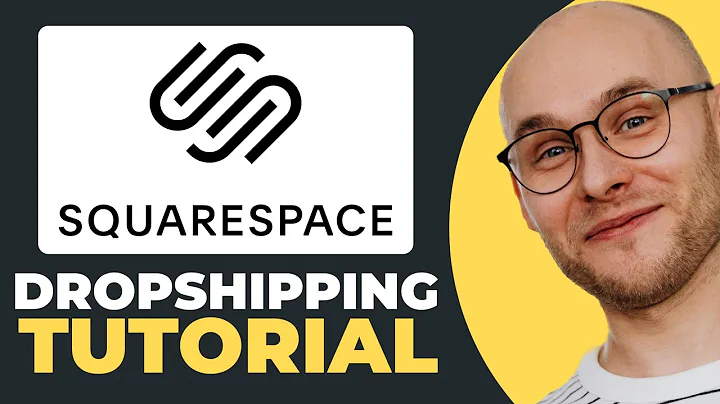Boost Your Profit Margin with the Right Markup
Table of Contents:
- Introduction
- Understanding Net Profit Margin
- Factors to Consider
3.1 Cost of Goods Sold
3.2 Shipping Costs
3.3 Merchant Fees
3.4 Advertising Costs
- Minimum Advertised Price (MAP)
4.1 Importance of MAP
4.2 Marking Up Products above MAP
- The Concept of Private Labeling
5.1 Benefits of Private Labeling
5.2 Considerations for Private Labeling
- Conclusion
Understanding Wholesale Pricing and Profit Margin
When drop shipping products, it is crucial to determine the markup on your wholesale prices. Simply marking up the prices by a fixed percentage may not lead to a substantial profit. In this article, we will delve into the factors to consider when calculating the markup and explore the concept of private labeling as an alternative approach.
Introduction
Drop shipping has become a popular business model in the e-commerce industry, offering entrepreneurs the opportunity to sell products without the need to carry inventory. However, setting the right markup on wholesale prices is essential to ensure a healthy profit margin. Let's explore the key factors that need to be considered when determining the markup.
Understanding Net Profit Margin
Before we determine the appropriate markup for wholesale prices, it is crucial to understand the concept of net profit margin. Net profit margin is the percentage of total revenue that remains as profit after deducting all expenses. In e-commerce businesses, maintaining a net profit margin of at least 30% is often considered a good benchmark.
Factors to Consider
To calculate the markup on wholesale prices accurately, several factors need to be taken into account. Let's examine each of these factors in detail:
1. Cost of Goods Sold
The cost of goods sold (COGS) is the wholesale cost of the product. This is the amount you pay to your supplier for each unit. It is crucial to factor in the COGS while determining the markup to ensure that your selling price covers this expense.
2. Shipping Costs
As a drop shipper, you are responsible for shipping the products to your customers. Offering free shipping has become a standard practice in the industry, meaning you bear the cost of shipping. Including the shipping costs in your markup ensures that this expense is covered.
3. Merchant Fees
When customers make a purchase using a credit card, you need to pay merchant fees to the credit card processors. These fees typically range from 1-3% of the transaction amount. Adding an appropriate margin for merchant fees in your pricing strategy helps cover these charges.
4. Advertising Costs
Promoting your products is essential to drive sales and attract customers. Allocating a portion of your markup to cover advertising costs ensures that you can invest in marketing efforts without affecting your profit margin.
Minimum Advertised Price (MAP)
Most suppliers have a Minimum Advertised Price (MAP) in place, which is the lowest price at which their product can be advertised. Adhering to MAP guidelines is crucial for maintaining healthy relationships with suppliers and avoiding potential legal issues or penalties. Let's explore the importance of MAP and whether it is possible to sell products above the advertised price.
Importance of MAP
MAP serves as a guideline to ensure fair competition among retailers selling the same product. It prevents price wars and protects the brand's image by maintaining consistent pricing across different channels. Adhering to MAP also allows retailers to earn a reasonable profit while offering quality products to customers.
Marking Up Products above MAP
In some cases, the wholesale price and the MAP set by the supplier may leave little room for a substantial profit. While it is possible to sell products above the MAP, it can make things more challenging. Customers are less likely to pay significantly higher prices for a product that is available at a lower price elsewhere. However, there is a workaround.
The Concept of Private Labeling
Private labeling involves creating your own brand name and product names for the supplier's products. By adding your brand and unique product names, you can differentiate yourself from competitors and avoid direct price comparisons. Private labeling allows you to set higher prices and increase your profit margin.
Benefits of Private Labeling
Private labeling offers several advantages for drop shippers. Firstly, it allows you to establish your brand and build a loyal customer base around it. Secondly, by private labeling products, you can sell them under your own pricing structure, unaffected by supplier-set MAPs. This gives you the flexibility to set prices that maximize your profit margin.
Considerations for Private Labeling
It's important to note that private labeling requires additional effort, such as creating your brand identity and marketing strategy. However, the potential for higher profits and the opportunity to create a unique brand make private labeling an attractive option for ambitious entrepreneurs.
Conclusion
Determining the appropriate markup on wholesale prices is crucial for drop shippers to maintain a healthy profit margin. By considering factors such as COGS, shipping costs, merchant fees, and advertising expenses, you can set prices that cover all expenses and leave you with a desirable net profit margin. Additionally, exploring the concept of private labeling can open up new opportunities for increased profitability. So, take the time to analyze your costs, consider private labeling if suitable, and position your business for long-term success.



















